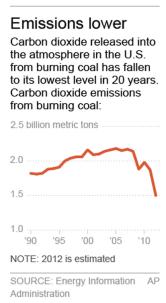 The good news: because utilities such as Southern Company are switching away from coal U.S. emissions of CO2 are the lowest they’ve been in 20 years. The bad news: they’re switching to natural gas, which not only still emits carbon dioxide, it pollutes groundwater through fracking, requires a lot of groundwater to do the fracking in the first place, and then uses more groundwater for cooling. But the further good news is cheaper energy sources drive out expensive ones, and wind and solar are already cheaper than nuclear
and coal, and solar is already cheaper than natural gas. Oh, and solar and wind emit no CO2.
The good news: because utilities such as Southern Company are switching away from coal U.S. emissions of CO2 are the lowest they’ve been in 20 years. The bad news: they’re switching to natural gas, which not only still emits carbon dioxide, it pollutes groundwater through fracking, requires a lot of groundwater to do the fracking in the first place, and then uses more groundwater for cooling. But the further good news is cheaper energy sources drive out expensive ones, and wind and solar are already cheaper than nuclear
and coal, and solar is already cheaper than natural gas. Oh, and solar and wind emit no CO2.
Kevin Begos write for AP yesterday, AP IMPACT: CO2 emissions in US drop to 20-year low
“There’s a very clear lesson here. What it shows is that if you make a cleaner energy source cheaper, you will displace dirtier sources,” said Roger Pielke Jr., a climate expert at the University of Colorado.
While conservation efforts, the lagging economy and greater use of renewable energy are factors in the CO2 decline, the drop-off is due mainly to low-priced natural gas, the agency said.
A frenzy of shale gas drilling in the Northeast’s Marcellus Shale and in Texas, Arkansas and Louisiana has caused the wholesale price of natural gas to plummet from $7 or $8 per unit to about $3 over the past four years, making it cheaper to burn than coal for a given amount of energy produced. As a result, utilities are relying more than ever on gas-fired generating plants.
Both government and industry experts said the biggest surprise is how quickly the electric industry turned away from coal. In 2005, coal was used to produce about half of all the electricity generated in the U.S. The Energy Information Agency said that fell to 34 percent in March, the lowest level since it began keeping records nearly 40 years ago.
And that’s why Southern Company (SO) turned towards natural gas: 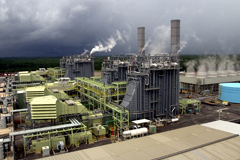 it’s cheaper! SO still prefers nuclear and coal before gas, as SO CEO Thomas A. Fanning keeps reminding us. But even SO couldn’t ignore “the revolution in shale gas”, which is cheaper prices through fracking. Solar PV costs dropped 50% last year alone. How long can SO ignore that?
it’s cheaper! SO still prefers nuclear and coal before gas, as SO CEO Thomas A. Fanning keeps reminding us. But even SO couldn’t ignore “the revolution in shale gas”, which is cheaper prices through fracking. Solar PV costs dropped 50% last year alone. How long can SO ignore that?
“Natural gas is not a long-term solution to the CO2 problem,” Pielke warned….
Coal and energy use are still growing rapidly in other countries, particularly China, and CO2 levels globally are rising, not falling. Moreover, changes in the marketplace — a boom in the economy, a fall in coal prices, a rise in natural gas — could stall or even reverse the shift. For example, U.S. emissions fell in 2008 and 2009, then rose in 2010 before falling again last year.
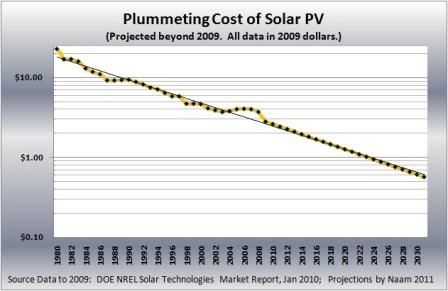 While coal and gas prices fluctuate (and nuclear prices go up), solar power keeps dropping in price, following Moore’s Law down, just like computers have done. In your pocket right now you probably have a computer more powerful than a big company could buy to fill a room thirty years ago. That’s what Moore’s Law did to computers, and that’s what it’s doing to solar power.
While coal and gas prices fluctuate (and nuclear prices go up), solar power keeps dropping in price, following Moore’s Law down, just like computers have done. In your pocket right now you probably have a computer more powerful than a big company could buy to fill a room thirty years ago. That’s what Moore’s Law did to computers, and that’s what it’s doing to solar power.
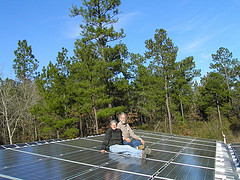 I’m already with Thomas Edison:
I’m already with Thomas Edison:
I’d put my money on the sun and solar energy.
Why are you letting Georgia Power put your money on nukes and coal and gas?
 Simple economics will win in the end, which is why I keep harping on Clean green jobs for community and profit, rather than going head-on against the tribal denial of climate change. Besides, when it got to
Simple economics will win in the end, which is why I keep harping on Clean green jobs for community and profit, rather than going head-on against the tribal denial of climate change. Besides, when it got to 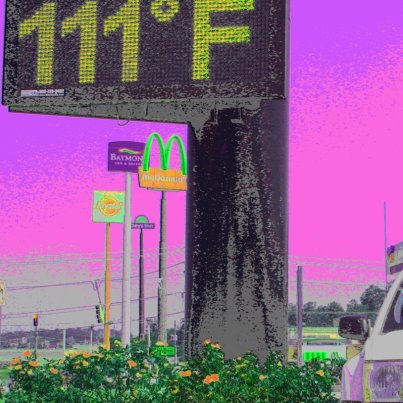 111 degrees in Macon this summer, maybe even the deniers started to take notice. Meanwhile, everyone takes notice of their billfolds.
111 degrees in Macon this summer, maybe even the deniers started to take notice. Meanwhile, everyone takes notice of their billfolds.
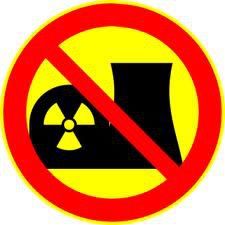 It would be nice if we got on with solar and wind in the southeast instead of shoveling more money down Southern Company’s Plant Vogtle money pit; money Georgia Power customers are already being charged for, and some of which the rest of us taxpayers will be on the hook for eventually.
It would be nice if we got on with solar and wind in the southeast instead of shoveling more money down Southern Company’s Plant Vogtle money pit; money Georgia Power customers are already being charged for, and some of which the rest of us taxpayers will be on the hook for eventually.
Who benefits from SO’s nuclear boondoggle? 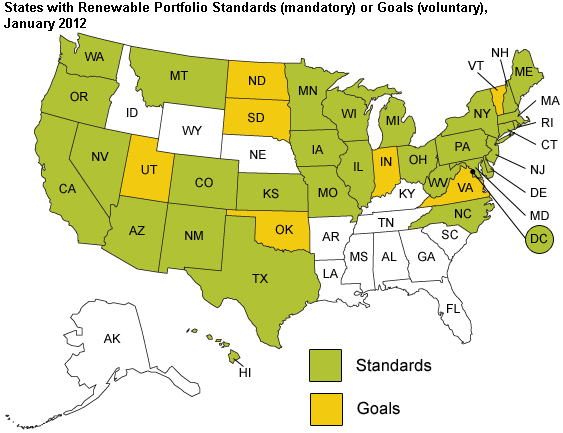 SO CEO Thomas A. Fanning with his 62% compensation raise last year, and other SO executives who cash in by selling off stock.
ALEC and its state legislators
who oppose renewable energy portfolios and preserve
Georgia’s antiquated 1973 Territorial Electric Service Act.
SO shareholders benefit, but they could get even better dividends if SO would get out in front on solar and wind and lead the country instead of dragging the southeast behind like they’re doing now. There’s an election going on right now. We can elect Public Service Commissioners and legislators who will stop those boondoggles and help turn the state and the region forwards.
SO CEO Thomas A. Fanning with his 62% compensation raise last year, and other SO executives who cash in by selling off stock.
ALEC and its state legislators
who oppose renewable energy portfolios and preserve
Georgia’s antiquated 1973 Territorial Electric Service Act.
SO shareholders benefit, but they could get even better dividends if SO would get out in front on solar and wind and lead the country instead of dragging the southeast behind like they’re doing now. There’s an election going on right now. We can elect Public Service Commissioners and legislators who will stop those boondoggles and help turn the state and the region forwards.
To solar add  conservation and efficiency and build some wind power off the coast, and we can shut down all the coal plants in Georgia, powering the whole state with sun, wind, hydro, and less natural gas than we’re using now.
conservation and efficiency and build some wind power off the coast, and we can shut down all the coal plants in Georgia, powering the whole state with sun, wind, hydro, and less natural gas than we’re using now. 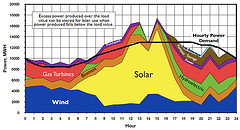 Don’t believe me? Let’s do the study and find out! How about if we stop that nuclear bet-the-farm risk; how about we stop polluting our air and water with fracking; how about we get on with solar and wind?
Don’t believe me? Let’s do the study and find out! How about if we stop that nuclear bet-the-farm risk; how about we stop polluting our air and water with fracking; how about we get on with solar and wind?
Who doesn’t want energy independence, jobs, and clean air and water for us and our children? And what if we create a better world for nothing?
-jsq
Short Link:
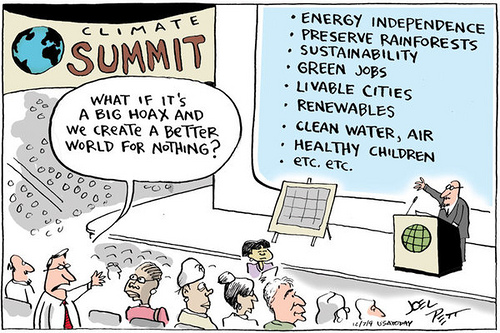
Yet another comprehensive article. I might also add that one of the major down-falls (if not the most significant) of large-scale conversions to natural gas is the resources lifecycle methane emissions.
As your readers likely know, Methane is about twenty times as ‘potent’ a greenhouse gas as Carbon Dioxide. That is to say, it is far more efficient at trapping heat then Co2. So, less methane has a far greater impact on climate disruption then more Co2.
Natural Gas, from the point of combustion, releases about half the amount of Co2 released from burning coal, and about 30% of whats released in burning oil. To keep the benefits of reduced Co2 levels when switching from coal to natural gas, natural gas wells and transport lines must leak less then 2% of methane into the atmosphere. Recent research from Cornell is showing that Fracking wells are regularly releasing more then 4%, and often as much as 8%- far exceeding the 2% threshold- and thus making Natural Gas a far more dangerous resource for climate stability.
http://www.nytimes.com/2011/04/12/business/energy-environment/12gas.html?pagewanted=all